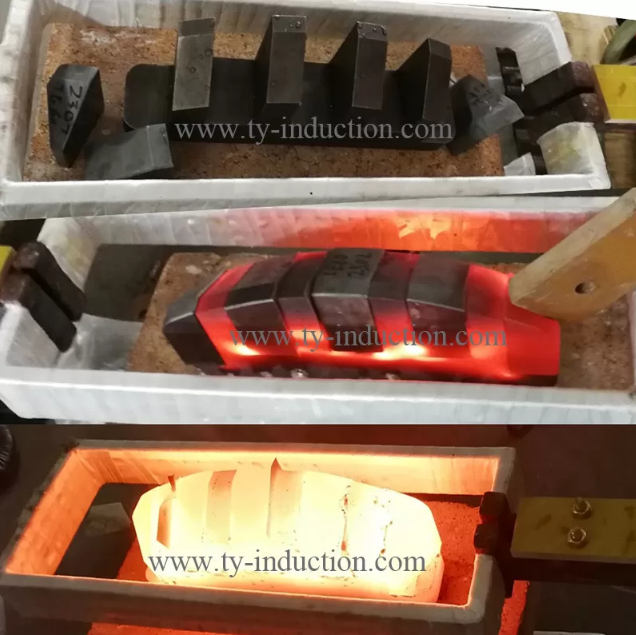What Are The Advantages of Induction Brazing?
May 25, 2024
Induction brazing offers several advantages over other common heating methods. Reasons to consider using induction heat include:
- Quick, rapid heating
- Controlled, precise heat application
- Localized heating for specific areas
- Easy adaptability and integration into production lines
- Enhanced fixture life and simplicity
- Consistent and reliable brazed joints
- Improved safety
- Fast changeover and repeatability
These benefits make induction brazing a top choice for manufacturing environments focused on operational excellence and lean, Six Sigma principles.
Induction heating provides significantly faster cycle times compared to torch brazing and furnace brazing. A properly designed induction heating coil allows the targeted area to heat up quickly. Unlike furnace brazing, which requires the entire part assembly to reach the brazing temperature, induction brazing only heats the joint interface, allowing the braze alloy to flow and capillary into the joint interface. Typically, induction brazing is performed in air, but it can also be configured for a controlled atmosphere using systems like Radyne's, utilizing nitrogen or argon. This reduces or even eliminates the need for flux. Additionally, induction brazing systems can be adapted for vacuum brazing when a vacuum environment is required.

One advantage of induction brazing over torch brazing is the ability to control the process temperature accurately. The unit can ramp up from 0 to 100% of its rated power in as little as 50 milliseconds, providing uniform heating. This precision ensures consistent focus on the parts, delivering an exact internal thermal profile.
Induction heating allows for the application of heat specifically to the areas being brazed, without heating the entire assembly. This selective heating minimizes metallurgical changes, such as tempering or annealing, and reduces part distortion compared to heating the whole assembly. Additionally, torch or flame brazing in air causes oxidation, scaling, and carbon buildup on the parts, which is minimized with the localized heating provided by induction.
Induction brazing equipment and soldering applications is easily adaptable to production line methods, allowing for strategic placement within an assembly line. These value-added induction brazing systems can be configured for manual control, semi-automated operation, or fully automated systems. High-volume applications may incorporate robotics for part handling and integration into the part flow using conveyor, carousel, or shuttle systems to move parts efficiently. Induction brazing systems typically use brazing preforms or braze paste and can include flux and paste dispensing equipment.
Simple fixtures are needed to hold and align parts for brazing, regardless of the heating method used. These fixtures ensure proper alignment during the heating and cooling cycles, allowing capillary action to occur while the parts are within the induction coil. With the localized heating of induction, fixture life is often extended since much of the fixture is not exposed to heat, unlike in torch or furnace brazing. Therefore, simpler and fewer fixtures are typically required for induction brazing compared to furnace brazing.
Induction brazing and soldering systems consistently produce clean, leak-free joints. The energy input into a part can be controlled with high precision, provided the part is positioned accurately relative to the inductor, ensuring a very controlled brazing process. Induction systems can store "recipe" profiles, maintaining uniform power and time for each brazing cycle. These recipes can be password-protected once a brazing profile is established. Induction heating also has less process variability compared to torch brazing, where different operators may use varying techniques and gas flow mixtures to achieve the desired flame characteristics (carburizing, reducing, neutral, or oxidizing) for the brazing operation.
Unlike flame or torch brazing, there is no open flame while using induction. Flame brazing requires fuel gases such as oxygen/acetylene or other bottled gases. These gases have fire and explosion hazards associated with them and these gas bottles need to be handled and stored properly. With the selective, localized heat of induction, only the targeted braze joint interface is heated without heating the nearby surfaces. Any combustible material (rags, wood, cardboard) near an open flame could ignite and needs to be kept away from the work station.
Not all brazing applications are ideal for induction heating. In cases of low volume, high mix, or irregular shapes where fixturing or coil design would be extremely complex, furnace brazing or torch brazing with experienced operators may be more economical choices. However, for companies embracing lean manufacturing, induction brazing offers fast, controllable, precise, energy-efficient, and repeatable brazed joints.
As an industry leader in induction heating, TianYuan Induction Electric can help you navigate the challenges and realize the advantages of induction brazing. For more information on solutions for induction heating and related processes, please contact us.
Hot Products
Contact Us
Enquiry hotline:
+86 135 4128 7190
Email:
Address:
No.18,14th Floor, Building 2, No. 169 Zhongli Road, Banzhuyuan Subdistrict, Xindu District, Chengdu, Sichuan, China, Code:610000
